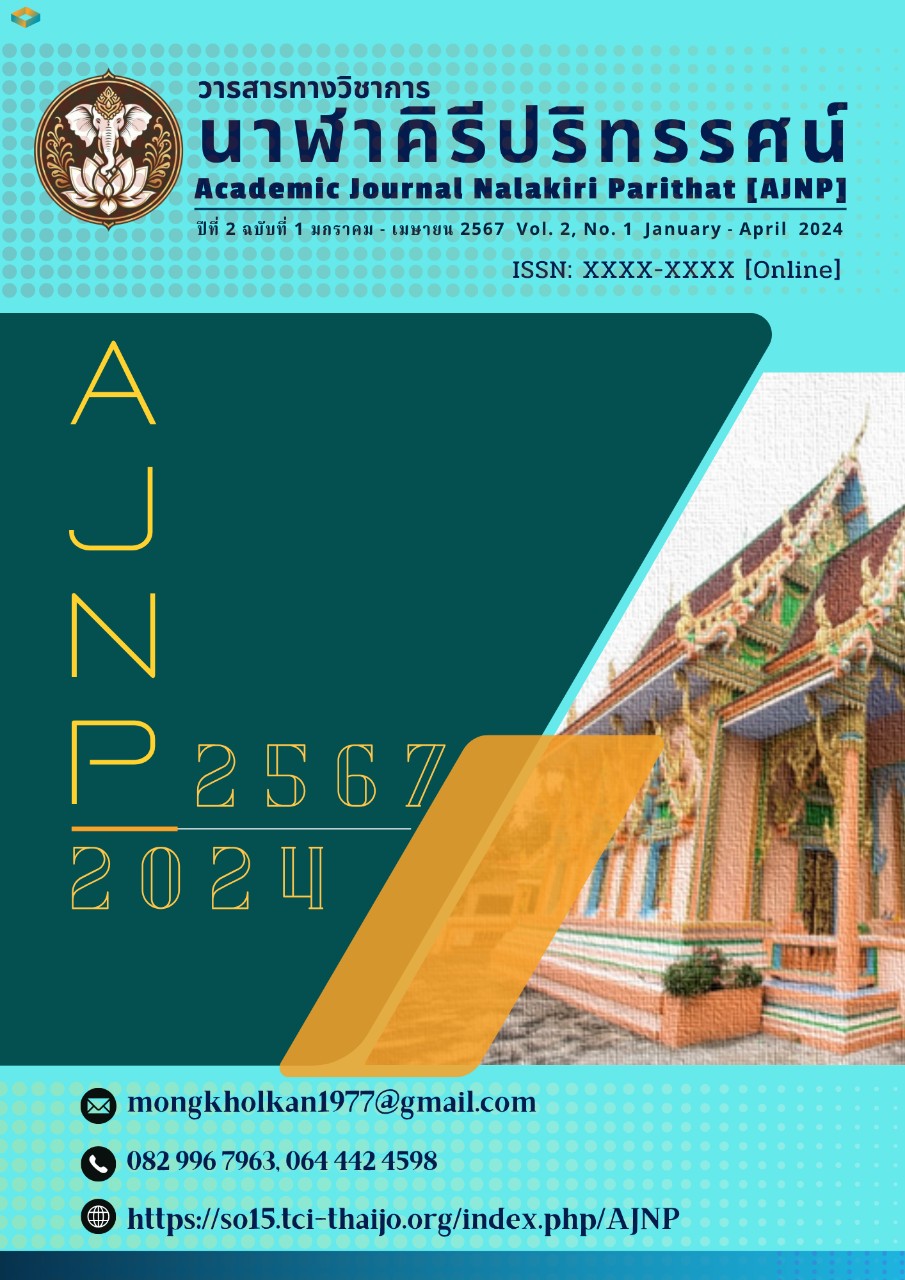BELIEF IN BRAHMA ACCORDING TO THERAVADA BUDDHISM
Keywords:
Belief, Concept, Brahma, Theravada BuddhismAbstract
According to Theravada Buddhism, Brahma is a deity who resides in the Brahma realm, does not indulge in sensual pleasures, has a lifespan of a kalpa to a great kalpa, has a divine form, divine complexion, divine clothing, a bright aura, has meditation as food, and meditation as an object, and lives with mental bliss. He has no apparent gender, but looks very much like a male. Brahma is of a higher status than the deities in the Kamavacara realm. Brahma resides in a realm that does not indulge in sensual pleasures, called the Brahma realm. There are two types of Brahma: the 16 levels of Brahma with a form, each level has a ruler governing it; the 4 levels of formless Brahma without a form, which have no ruler governing them because they have no form, only spirit in the state of mind. The mansions of Brahma are called the Brahma mansions, the residences of Brahma are called the Brahma worlds. Brahma originates from humans who have achieved meditation. When they die, meditation has not yet diminished. The results of meditation cause them to be born as Brahma. When their lifespan in the Brahma world ends, they must cycle through rebirths in samsara.
Brahma is a type of being with great merit, more special than other realms of beings. Brahma’s face is round and smooth, with a halo radiating from his body like the sun. His jointed body parts, namely his knees and elbows, are smooth and beautiful. Brahma has beautiful hair, a crown on his head, a single face, an upright body, and always sits in the same position, with a resonating sound. He enjoys happiness in the Brahma world until the end of his life. The teachings of Buddhism believe that Brahma is real. Brahma is related to the Lord Buddha, including his birth, ordination, enlightenment, teaching the Dharma, and nirvana. The sutras that mention Brahma are the Bhuridatta Jataka, Narada Jataka, Brahmajalasutra, and Brahma Sutra. In Buddhism, Brahma is divided into 2 types: Brahma-personal-adhisthan, which is the form Brahma, and the formless Brahma; Brahma-dharma-adhisthan, which is the Sotapanna, Sakadagami, Anagami, Arahant, the Lord Buddha, father, and mother. Thai society has received influences on Brahma from Buddhism, which is the worship of parents who have virtue as Brahma. Because he has the divine virtues, Thai people who worship Phra Phrom believe that Phra Phrom is a great person, a virtuous person, and a pure person.
References
พระพรหมคุณาภรณ์ (ประยุทธ์ ปยุตฺโต). (2555). เหนือสามัญวิสัย. กรุงเทพฯ: ไพลิน.
_________. (2559). พจนานุกรมพุทธศาสน์ ฉบับประมวลธรรม. กรุงเทพฯ: ศึกษาเพื่อสันติภาพ.
พระธรรมปิฎก (ประยุทธ์ ปยุตฺโต). (2545). ศาสนากับสังคมไทย. กรุงเทพฯ: สหธรรมิก.
พระพรหมโมลี (วิลาศ ญาณวโร). (2555). วิปัสสนาวงศ์. กรุงเทพฯ: ธรรมอินเทรนด์.
__________. (วิลาศ ญาณวโร). (2541). ภูมิวิลาสินี. กรุงเทพฯ: ดอกหญ้า.
พระสัทธัมมโชติกะ. (2546). ปรมัตถโชติกะ. กรุงเทพฯ: มูลนิธิสัทธัมมโชติกะ.
พระพานิช ญาณชีโว. (2550). ไตรภูมิพระร่วง. กรุงเทพฯ: สหธรรมิก.
พระมหาณรงค์ จิตฺตโสภโณ. (2527). พระไตรปิฎก. กรุงเทพฯ: มหาจุฬาลงกรณราชวิทยาลัย.
พระธรรมกิตติวงศ์ (ทองดี สุรเตโช). (2555). ธรรมสารทีปนี. กรุงเทพฯ: พุทธปรัชญา.
ฟื้น ดอกบัว. (2555). ศาสนาเปรียบเทียบ. กรุงเทพฯ: บูรพาสาส์น.
ธนู แก้วโอภาส. (2542). ศาสนาโลก. กรุงเทพฯ: สุขภาพใจ.
สนั่น ไชยานุกุล. (2519). ปรัชญาอินเดีย. กรุงเทพฯ: มหาจุฬาลงกรณราชวิทยาลัย.
สมัคร ปุราวาส. (2554). ปรัชญาพราหมณ์ในสมัยพุทธกาล. กรุงเทพฯ: สยาม.
สุภัทรดิศ ดิศกุล. (2547). ศาสนาพราหมณ์ในอาณาจักรขอม. กรุงเทพฯ: อมรินทร์พริ้นติ้ง.
สุชีพ ปุญญานุภาพ. (2511). ประวัติศาสตร์ศาสนา. กรุงเทพฯ: รวมสาส์น.
สุจิตรา อ่อนค้อม. (2538). ศาสนาเปรียบเทียบ. กรุงเทพฯ: ดวงแก้ว.
สุจิตต์ วงษ์เทศ. (2549). พลังลาวชาวอีสานมาจากไหน. กรุงเทพฯ: มติชน.
สุนทร ณ รังสี. (2545). ปรัชญาอินเดียประวัติและลัทธิ. กรุงเทพฯ: จุฬาลงกรณ์มหาวิทยาลัย.
Downloads
Published
How to Cite
Issue
Section
License
Copyright (c) 2025 Academic Journal Nalakiri Parithat

This work is licensed under a Creative Commons Attribution-NonCommercial-NoDerivatives 4.0 International License.



